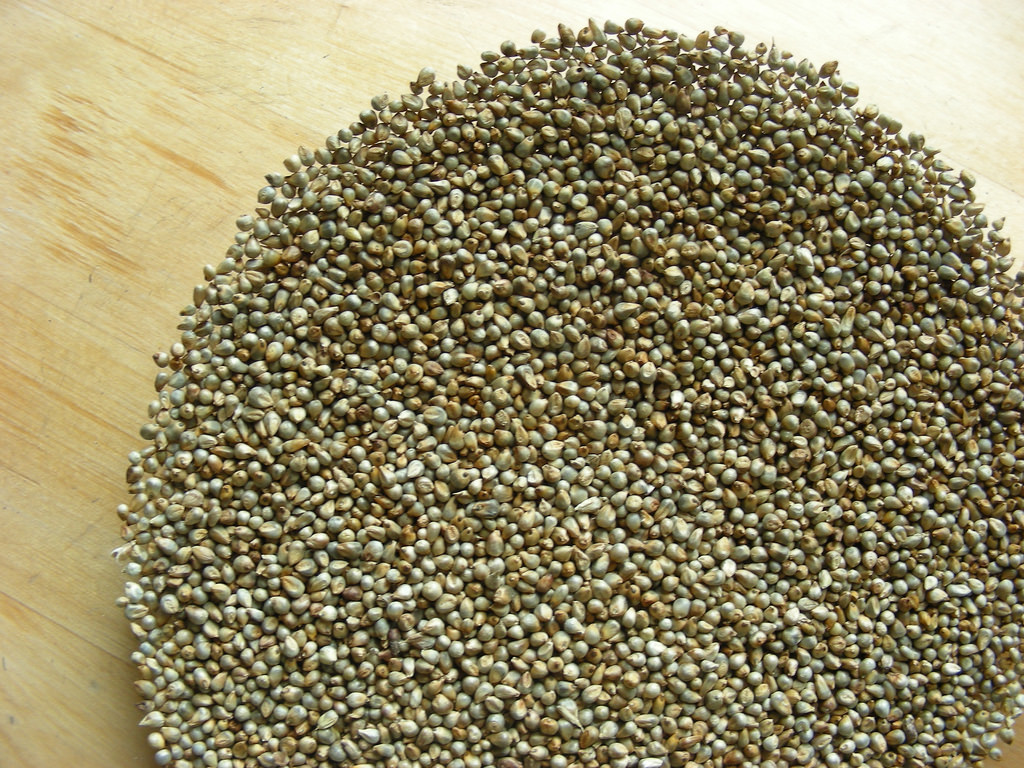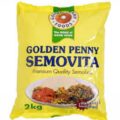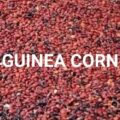Millets are a group of highly variable small-seeded grasses, widely grown around the world as cereal crops or grains for fodder and human food. Millets are important crops in the semiarid tropics of Asia and Africa, with 97% of millet production in developing countries. There are numerous varieties of millet that you can find in Nigeria, Ghana, India, Mali, and Niger. These varieties include the pearl millet, finger millet, foxtail millet, and proso millet. Millet can be used as a traditional cereal, and can also be used in porridge, snacks, and other types of bread. Millet is also a good source of carbohydrates and fiber, like other grains. Millet has high nutritional value as it is a good source of nutrients, vitamins, minerals, and organic compounds that can boost human health in various ways. The Health benefits of millet:
Millet helps in weight loss
Millets are a vital part of a well-balanced diet and moderate consumption of this whole grain is linked with effective weight loss. Whereas, this gluten-free grain is the powerhouse of various nutrients which is proven to aid in weight loss. Overweight and obesity are known to increase blood pressure. High blood pressure is the leading cause of strokes. Excess weight also increases your chances of developing other problems linked to strokes, including high cholesterol, high blood sugar, and heart disease.
Rich In Dietary Fiber
Millet is considered a “nutri-cereal” because it is high in fiber and other nutrients. Dietary fiber is important for our digestive health and regular bowel movements. Fibre also helps you feel fuller for longer, can improve cholesterol and blood sugar levels, and can assist in preventing some diseases such as diabetes, heart disease, and bowel cancer. According to the Journal of Range Management on JSTOR, millet helps to eliminate problems like constipation, excess gas, bloating, and cramping. By regulating your digestive processes, you also improve your nutrient retention and reduce your chance of more serious gastrointestinal conditions like gastric ulcers.
Help fight Diabetes and Hypertension
Millets are good sources of protein, they are rich in B vitamins, (especially niacin, B6, and folic acid, and magnesium), Researchers from the University of Kentucky have shown a link between whole grains and the prevention of heart disease risk. Millet can be one of the healthier grains to add to your diet if you want to protect your heart. It is a rich source of magnesium, which is an important mineral for reducing blood pressure and the risk of heart attack or stroke, particularly in the case of atherosclerosis. Millet is also a beneficial food in many countries (where diabetes is less frequently found). Perhaps it is because one of the effects of millet is to help reduce the chance of type 2 diabetes, thanks to the significant levels of magnesium found in it.
Help fight arthritis
Arthritis is an inflammation of the joints. It can affect one joint or multiple joints. There are more than 100 different types of arthritis, with different causes and treatment methods. Two of the most common types are osteoarthritis (OA) and rheumatoid arthritis (RA). Millets are phosphorus, manganese (a trace mineral that acts as an antioxidant), and may benefit people suffering from arthritis, inflammation, PMS, and poor bone health. Whole grains lower levels of C-reactive protein (CRP) in the blood. CRP is a marker of inflammation associated with heart disease, diabetes, and rheumatoid arthritis. Foods like millet are excellent sources of whole grains.
Millets Help in Detoxification of the body
Millets are a rich source of phenols and antioxidants, Quercetin, curcumin, ellagic acid, and various other beneficial catechins can help rid your system of any foreign agents and toxins by promoting proper excretion and neutralizing enzymatic activity in certain organs. Phenolic compounds have long been associated with a variety of biochemical and pharmacological properties including antioxidant, antiviral, anticancer, and anti-inflammatory activities.
Helps Fight Asthma
As with many whole grains, studies have shown that increasing the intake of millet can reduce cases of childhood asthma by a large percentage. Childhood asthma (pediatric asthma) is the most common serious chronic disease in infants and children; yet is often difficult to diagnose. In infants and children, asthma may appear as Wheezing (whistling sound) when breathing. Coughing, Rapid breathing.
Frequently Asked Questions About Millet Nutrition
Can Millet be eaten at night?
Fact: High-carb foods that are digested to form glucose include rice, wheat, ragi, and millets. These foods should be eaten at night, so that after they are digested (it takes two hours to digest complex carbohydrates), the glucose which is absorbed into the blood, will more readily convert into energy
Are Millets good for dinner?
High in antioxidants, dietary fiber, and protein, millet is easily digestible and gluten-free. This makes it an extremely healthy alternative to rice and wheat. Millet is often used as baby food and one of the most common breakfast foods in Northern Nigeria and Ghana. Millet can be used in a wide array of dishes, and yes it is good for breakfast, lunch, or dinner.
What do you use millet for?
In Nigeria, Millet is commonly used to make fura, a millet dough balls eaten in Nigeria and Niger, but there are many other ways to use millet. You can use millet to make kunu, burukutu, cookies, muffins, or quick bread for extra crunch.
Does millet raise blood sugar?
Glycemic Index measures how food raises blood glucose levels, i.e the more the GI the more the sugar levels in your blood. Millets are recommended to diabetics as they are rich in fiber and have low GI.
Is millet good for cancer patients?
A staple grain of Nigeria, Ghana, and many other countries in West Africa millet is a versatile gluten-free whole grain that is similar to quinoa. Whole millet is a nutritional powerhouse providing a good source of protein, fiber, B vitamins, iron, zinc, magnesium, and other cancer-fighting agents.
Where is millet grown in Nigeria?
Millets are important crops in Nigeria, favored due to its productivity and short growing season under dry, high-temperature conditions. Millet is widely grown in Nigeria but more predominantly in Sokoto, kebbi, Zamfara, Kano, Jigawa, Bauchi Borno, and other states of Northern Nigeria.
What millet contains?
In a 100 gram serving, raw millet provides 378 calories and is a rich source (20% or more of the Daily Value, DV) of protein, dietary fiber, several B vitamins, and numerous dietary minerals, especially manganese at 76% DV (USDA nutrient table). See: Healthy Nigerian Meals Time Table






